Office
Buildings - St Mary's Parsonage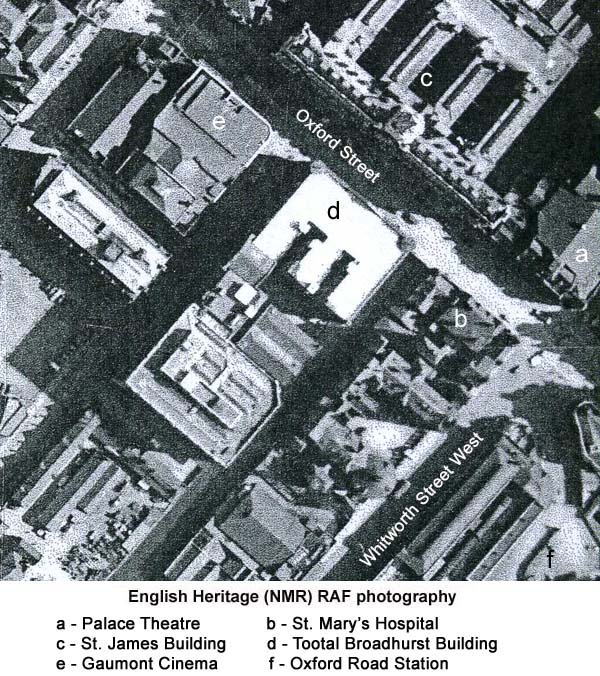 On a triangular site close to
Parsonage Gardens is a collection of three former
warehouses now converted into offices. I have
shaded them in red on the aerial photograph above.
The building located next to the gardens is made up of
numbers 1, 2 and 3 North Parade, seen below.
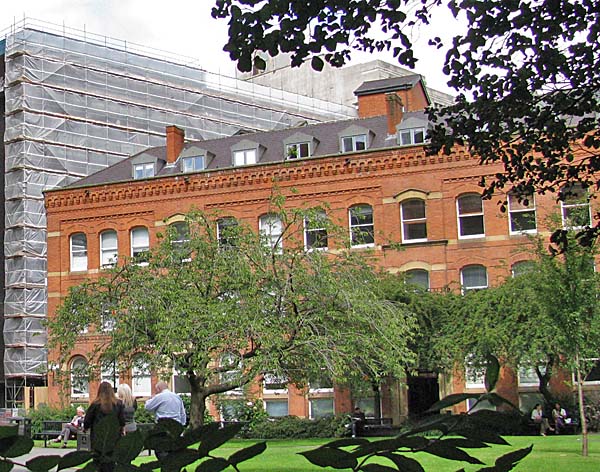 The "PropertyLink" website describes 1 North Parade as, "... a prestigious period office building located overlooking the tranquil Parsonage Gardens in Central Manchester, occupying one complete side of the landscaped gardens; it creates an immediate dramatic impression on both visitors and passers-by. The strategic location of One North Parade is superbly positioned to benefit from all the nearby amenities of the City Centre. The available accommodation is fully fitted and ready for immediate occupation as it already benefits from network cabling and data, along with partitioned meeting rooms and offices." 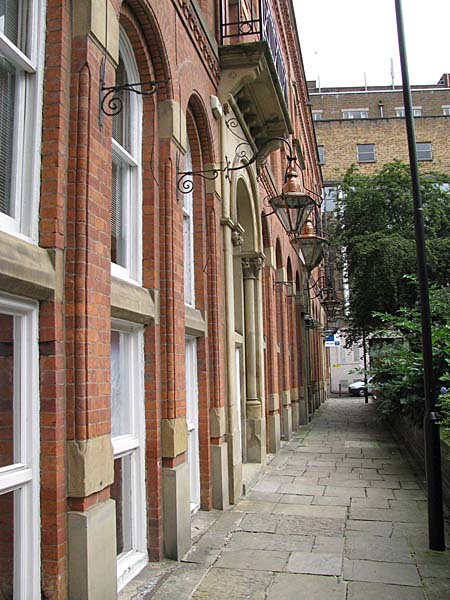 Further along St. Mary's Parsonage lie Numbers 3 and 5 Parsonage Chambers. 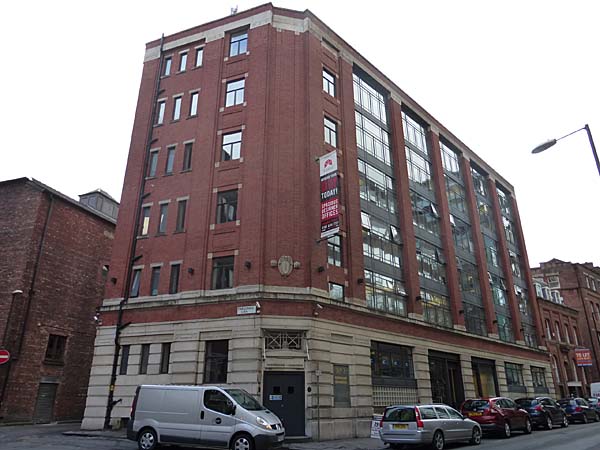 3 Parsonage Chambers, closest to the camera, says of itself that it is, "...a characterful building located just off Parsonage Gardens (one of Manchester largest public ‘green’ spaces) behind Deansage in the Parsonage Conservation area. The building has been sympathetically refurbished by its current owners to provide a unique ‘cocktail’ of original features with an architectural twist of contemporary finishes. The result is an exceptional working environment both from a practical and aesthetic point of view. The re-modelling of the buildings entrance resulted in an oak ‘boarding bridge’ incorporating steel balustrades which is one of the buildings outstanding features." 5 Parsonage Chamber, furthest away with a TO LET sign attached to it, is described as, "...a charming Georgian style property located in a highly sought after area of the city centre. The front elevation is impressive with characterful arched windows and opulent doorways providing a timeless elegance which will appeal to professional businesses." 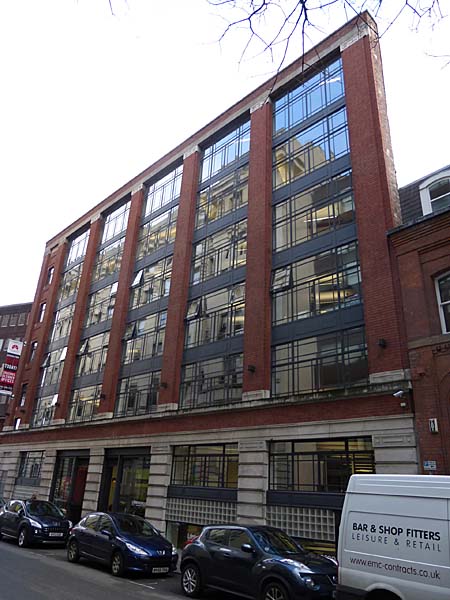 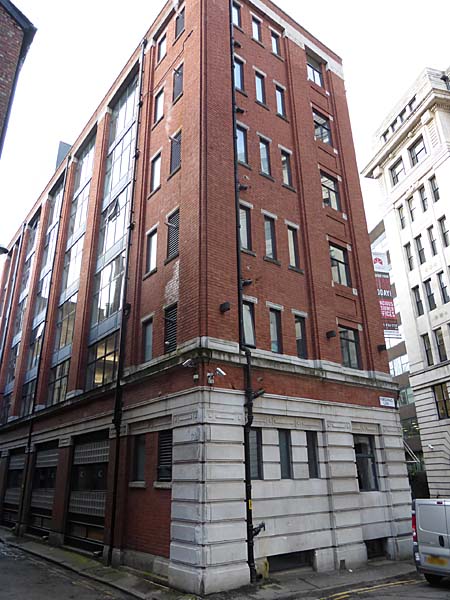 ***************************** As the Goad Map of 1888 shows,
these buildings started life as warehouses.
Below is my version of the Goad plan of all three
buildings showing their tenants and uses. As
you can see, they were, for the most part, yarn
warehouses.
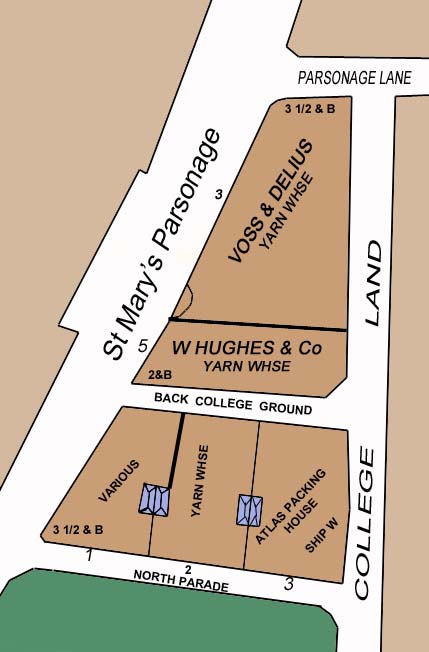 A Chetham's Library digital facsimile
of "Manchester of Today (1880)" (London ;
Manchester ; Glasgow : Historical Publishing Company,
1888), made available through “archive.org” has some
information about Voss and Delius who occupied 3
Parsonage Chambers. It is possible that the Delius
in question was Julius Delius, a textile merchant and
father of the composer Frederick Delius. The
article says that, “This business was established
in the year 1852,' and has had a career of great
success. The premises consist of a fine spacious
warehouse of many floors, and a suite of commodious
offices. The trade is with the Continent and North
America. The principal shipments are of cotton
yarns, cotton-waste, and machinery. The machinery
includes every description of plant for cotton
spinning and weaving, steam engines and
engineers' machine and hand tools. Messrs. Voss and
Delius have branch at Oldham which is devoted to the
cotton-waste trade exclusively The firm
employs a large number of hands both at the
Parsonage and Oldham. The partners are now Mr. E.
Kylhnann, Mr. E. Goetz, and Mr. C. Collmann. All
these gentlemen have had much experience in the
trade and the special business carried on. They are
respected members of the Royal Exchange, and are
much esteemed in commercial and business circles.
The firm takes high rank amongst the shipping houses
of the city."
(Note: Glyn Rhys contacted me to say that in the text above Kylhnann should be Kyllmann, "... specifically Edward Kyllmann brother of Max Kyllmann who helped set up the Manchester Committee for Emancipation of Women." *****************************
I haven't been able to determine the
exact date when these warehouses/offices were built but
I suspect they date from the late 1800s. The OS
map of the area in 1844 shows quite a different set of
building on this site.
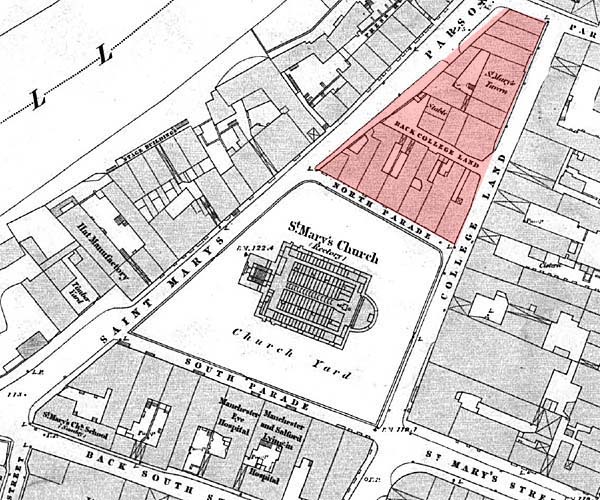 |